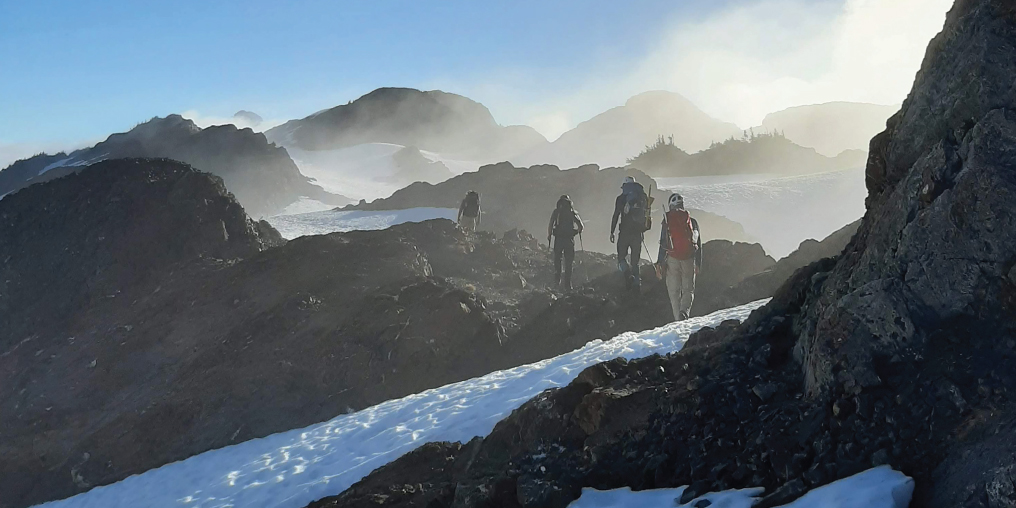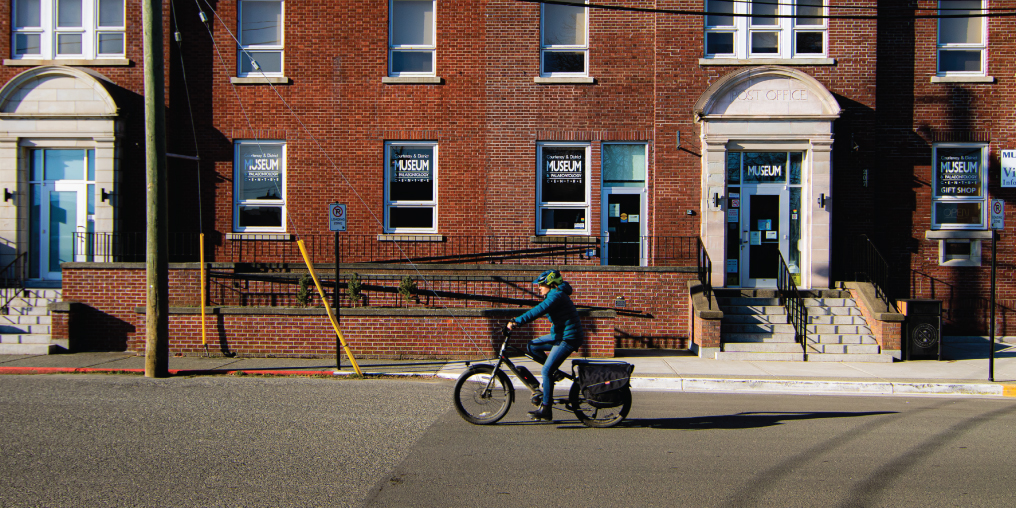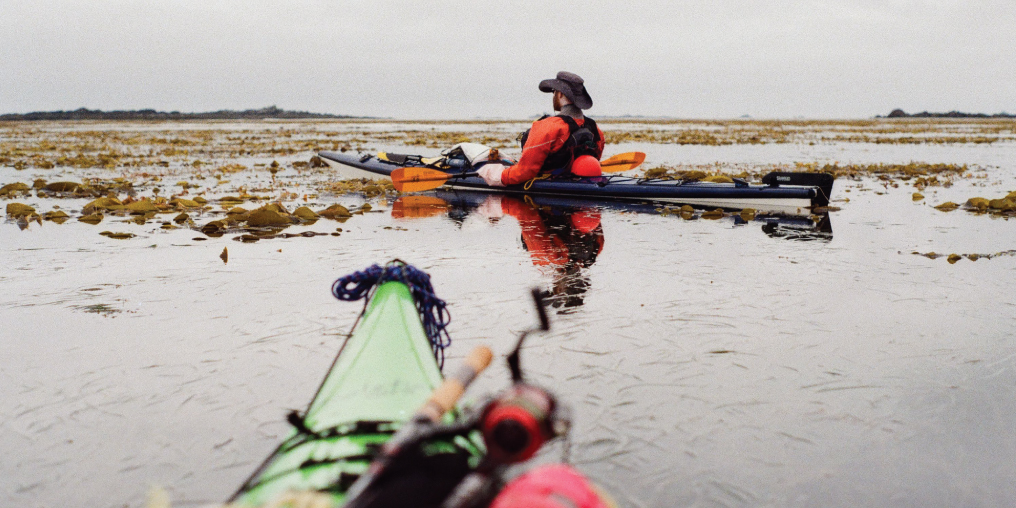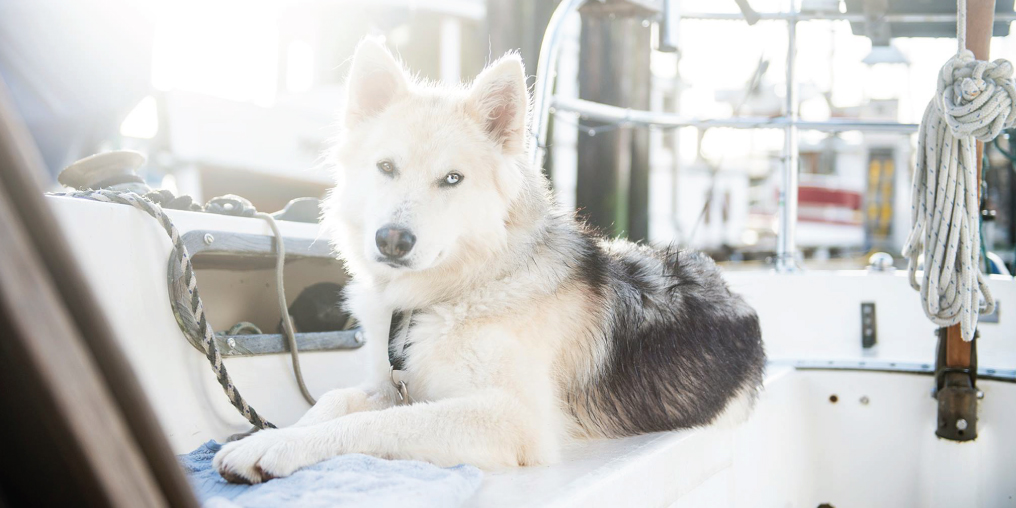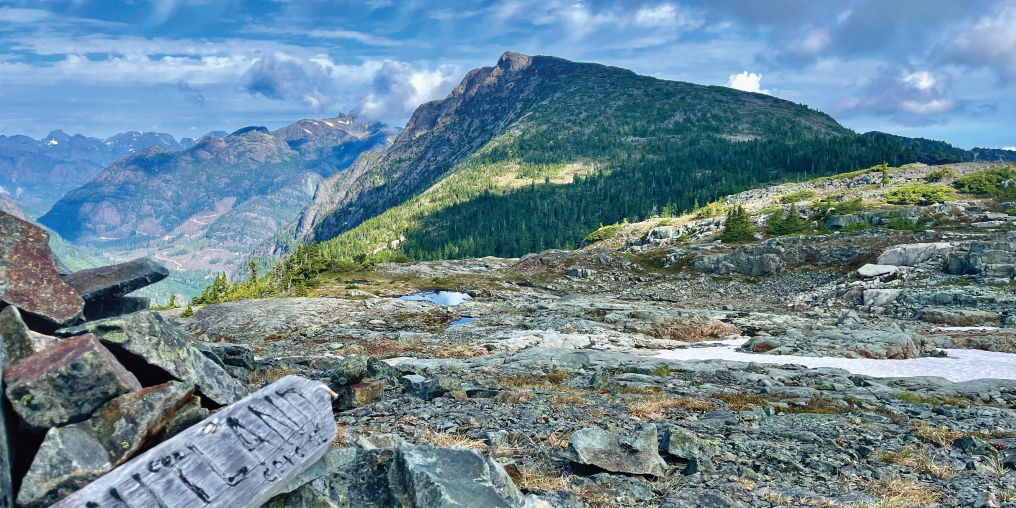All of us who love the alpine have our own reasons for getting out there. A hiker I once passed in the Kweishun Valley told me that he loved the way the mountains could swallow us up, the fact that people can just disappear out there.
Many people are surprised to learn the extent of the alpine on Vancouver Island—maybe it gets a little overlooked in the shadow of the Coast Mountains. In fact, you need to be good at bushwhacking and route-finding to access many of the mountains found in the Island’s wildest places. An exception is the towering Golden Hinde; at 7208 feet, it’s the tallest peak on the Island. Located deep in Strathcona Park, it has a trail leading to it, but it’s still a tough challenge: it takes most people three to five days to complete the trek.
I get a sense of calm and focus in the cathedral of mountain peaks that I can’t find anywhere else. It’s an addiction and a part of my life I have had to balance, especially since becoming a mother.
Growing up on the Saanich Peninsula, I was always a hiker. After high school, I transitioned more into mountaineering, mainly off the Island, but continued to do the odd local climb, and it remained one of my favourite things to do.
When my son Caleb was born in 2018, I worried that motherhood would lead to my losing access to the mountains, but, unexpectedly, they became more of an escape than ever. With the help of my extremely supportive partner, Dayna, I’ve been able to redefine how I thought motherhood would look. Mountaineering helps me be a better parent. Returning from the mountains, I have more patience and understanding in my day-to-day life, and I feel I’m setting a good example to be determined and strong. (Dayna enjoys hiking, too, but isn’t as enthusiastic about all-day suffer-fests as I am. We both want to instill a passion for the outdoors in our son.)
When Caleb was 10 weeks old, I climbed Warden Peak, a steep, jagged mountain north of Gold River. On this horrible, cold, wet climb early in September, my friend Roxy and I made countless climbing faux pas as we shivered and swore at our bad decisions. Yet we still made it to the summit, and I felt I was back in the game.
Then I started tallying up my Island 6000’ers.
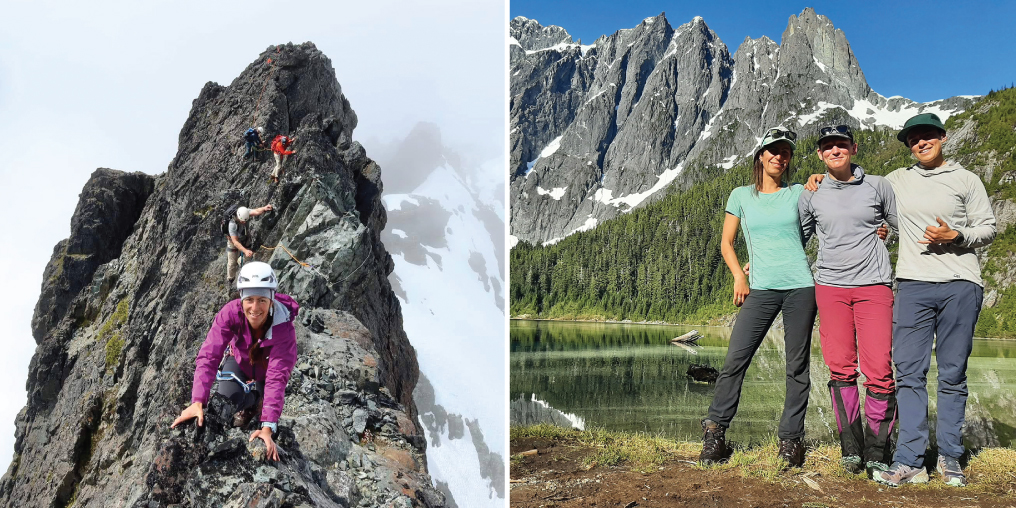
LEFT: PHOTO BY BARRY HANSEN RIGHT: PHOTOGRAPHER UNKNOWN
When I climbed Warden Peak with Roxy, I had only summited a dozen of the 6,000’ers. I was more focused on another ACC list—the nine Island Qualifiers peaks—that seemed attainable. But over the next two years, I managed to check off another 23 from my Island 6000 list, all in the company of great climbing partners. For any mountaineer, having the right companions is an important part of the experience. It isn’t the easiest thing to find people who match your skill level, that you can spend the day talking to, and who enjoy the physical suffering that mountaineering brings.
I was hiking one day in November 2021 with my friend Barry when he told me he only had 22 of the 53 left: “I’m going to finish them in 2022,” he said. I’m competitive by nature, and I only had 17 left. I figured if a 59-year-old thought he could finish in 2022, there was no reason this 36-year-old couldn’t.
It wasn’t a cutthroat game of mountaineering; in fact, we were pretty symbiotic. We knocked off mountains we both needed together, and we even repeated a few. I’m very much a list person who enjoys the satisfaction of completing tasks. Every mountain completed was an accomplishment to feel proud of: I was that much closer to my goal.
The big mountain always looming in the back of my mind was Mount Colonel Foster, probably the most technical and difficult mountain on Vancouver Island. Two of my female climbing friends, Darryl and Tiffany, were keen to tackle it with me, but with snow lingering late in the alpine, it was touch and go if an ascent was possible. I’d mapped out my remaining peaks for the summer of 2022 and there wasn’t a lot of wiggle room. Five days before our proposed departure date in June, I’d completed a 21-hour day hike to Nine Peaks Mountain and back in mixed conditions, and I had another hike scheduled for a week after Colonel Foster.
In the end, with the weather looking favourable, we loaded up our packs with camping and mountaineering gear and went for it. Our team of three completed the first all-female ascent of Colonel Foster, and it was a superb climb. We couldn’t have had better conditions, along with great rock, incredible exposure, and amazing company.
The rest of the summer was full of hiking, work, and family trips. It was hard to balance all of this, and, at times, I felt I was neglecting one or the other of my commitments. In August, my friend Rich became the sixth person ever to climb all 53 peaks, and a week later Barry finished his quest.
Four days after that, I became the eighth and youngest person ever to complete all the 6000’ers. Barry and I had pulled off a trip of 14 and a half hours to the summit of Mount Harmston from the Comox Glacier trailhead—a route that involved practically re-climbing two other 6000-foot peaks we’d already done. Another friend was my invaluable cheerleader, waiting at the trailhead with cold beers.
I’ve been lucky to hike with inspiring women and men who’ve pushed me to achieve my goals, and I’m thankful to my family and friends at home who helped with childcare and encouraged me.
THE 6000’ERS
Mountain lists aren’t a new concept. There are the Seven Summits (the highest peak on each continent), the eight-thousanders (the 14 Himalayan peaks over 8,000 m), and the Canadian Rockies’ 11,000ers, to name a few. On Vancouver Island, we have the 6000’ers, which are peaks taller than 6,000 feet (just over 1,815 m).
A climber named Charles Turner set out to summit all 46 of these peaks and completed his quest in August 2004. Since then, thanks to updated GPS and surveying, the list of 6,000ers has expanded; the Alpine Club of Canada’s official list now includes 53 peaks. The ACC launched the Charles Turner 6000’ers Award in 2018; it’s bestowed on those who’ve completed all 53 climbs.

